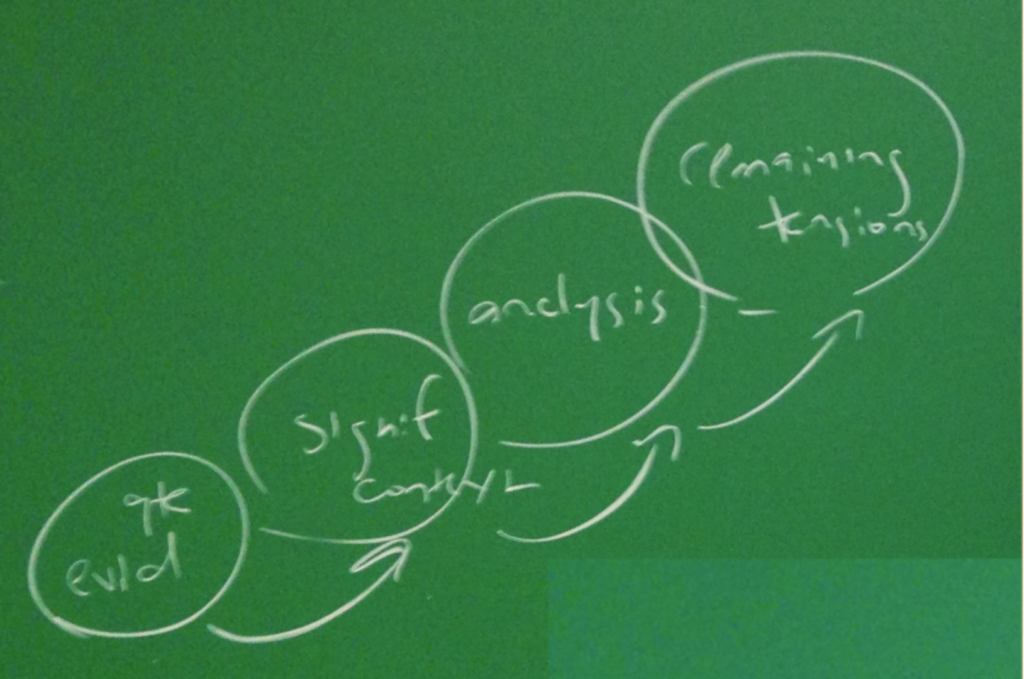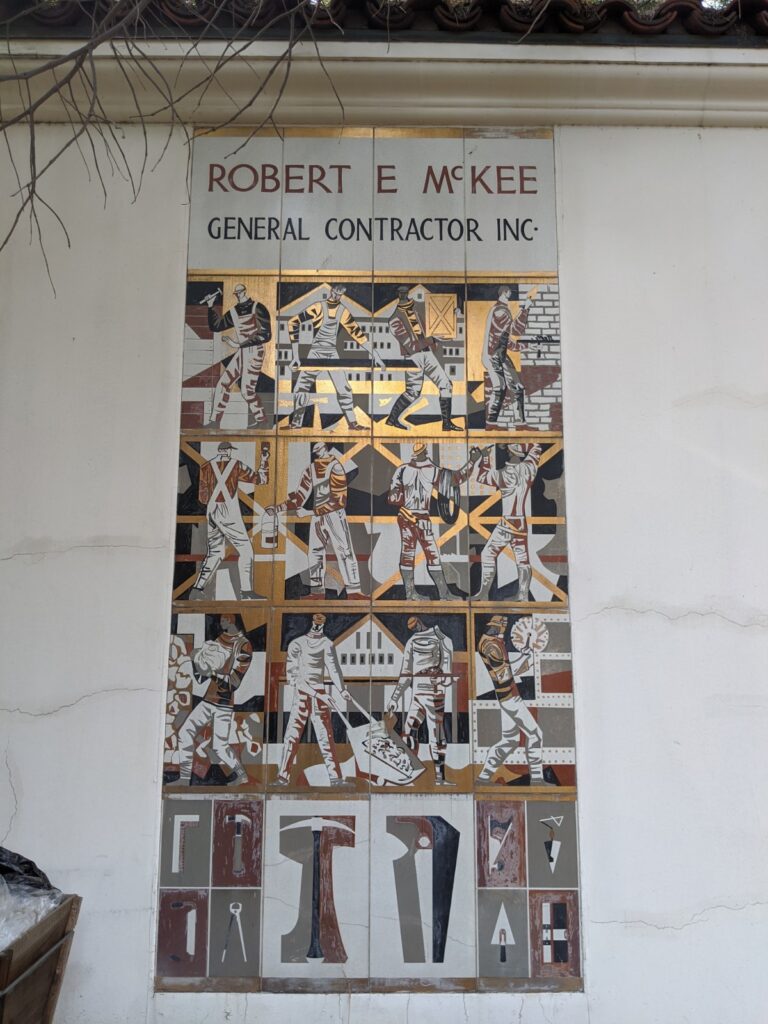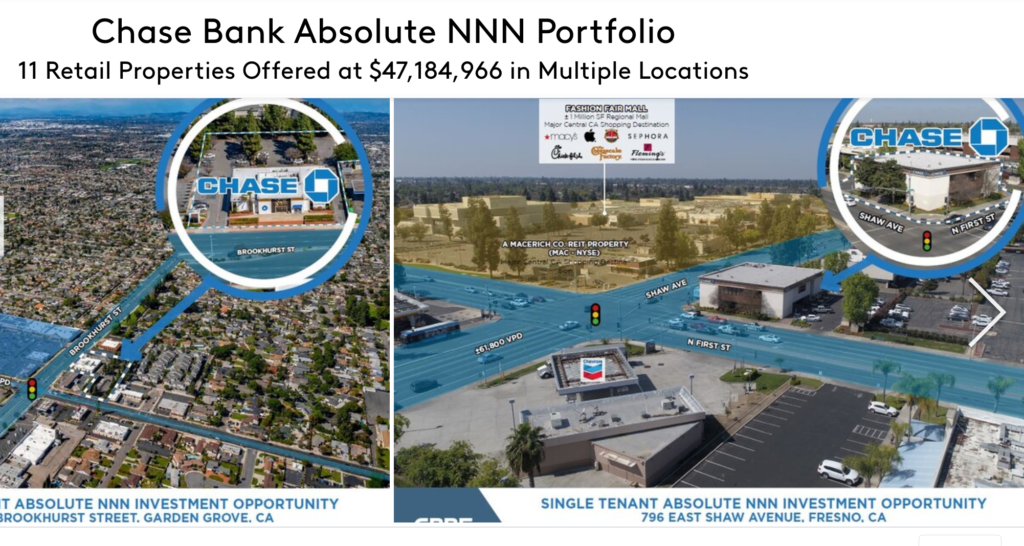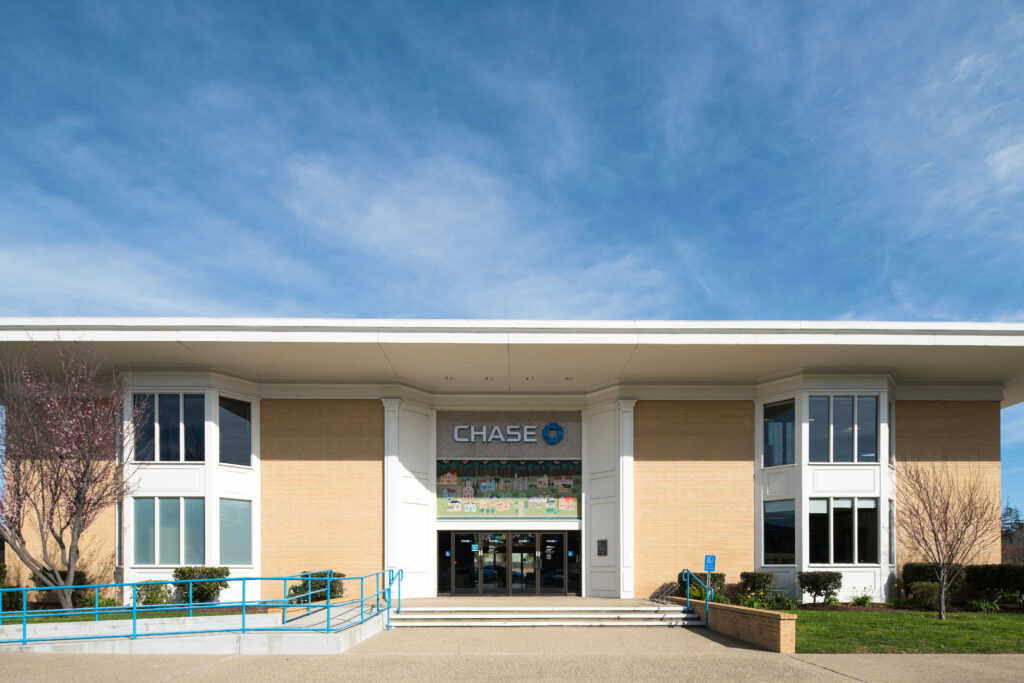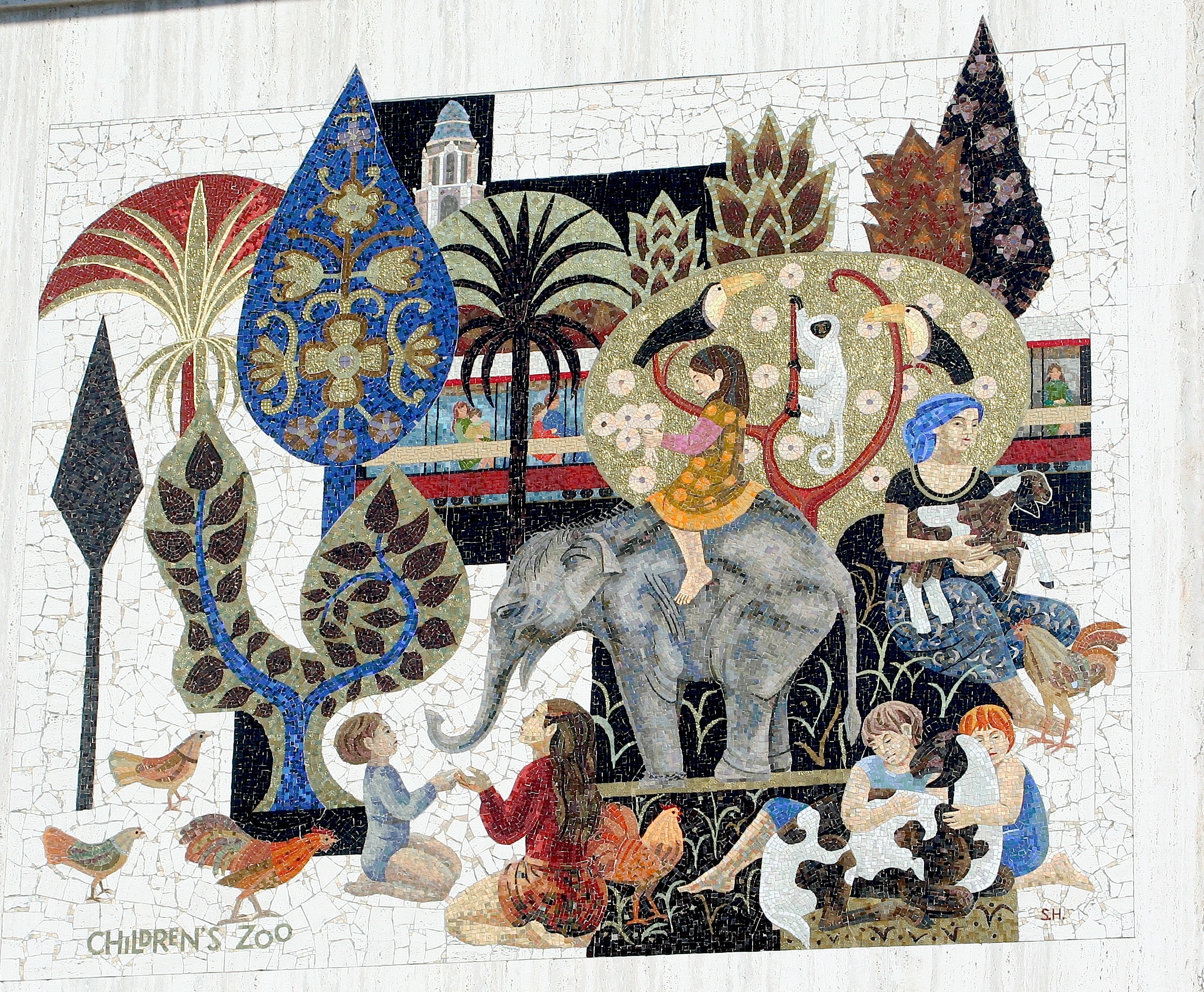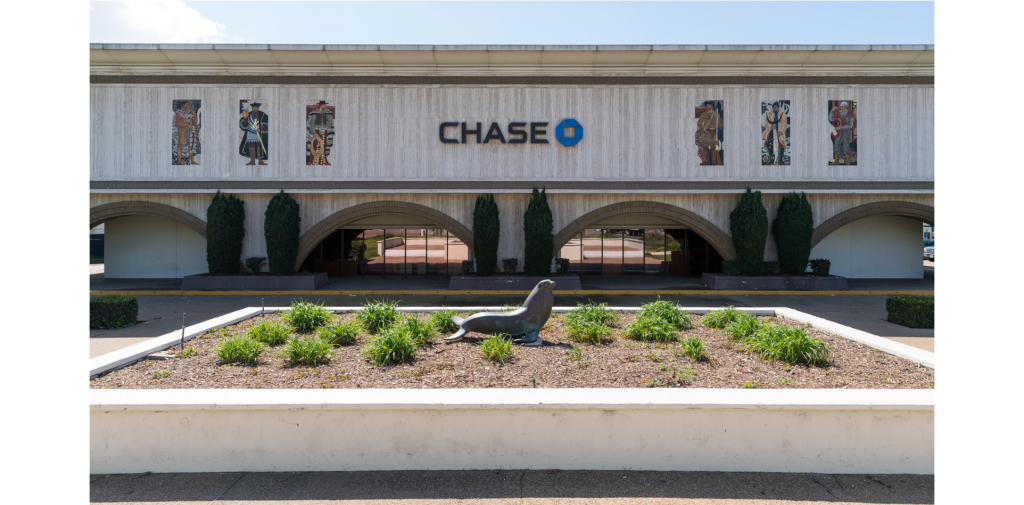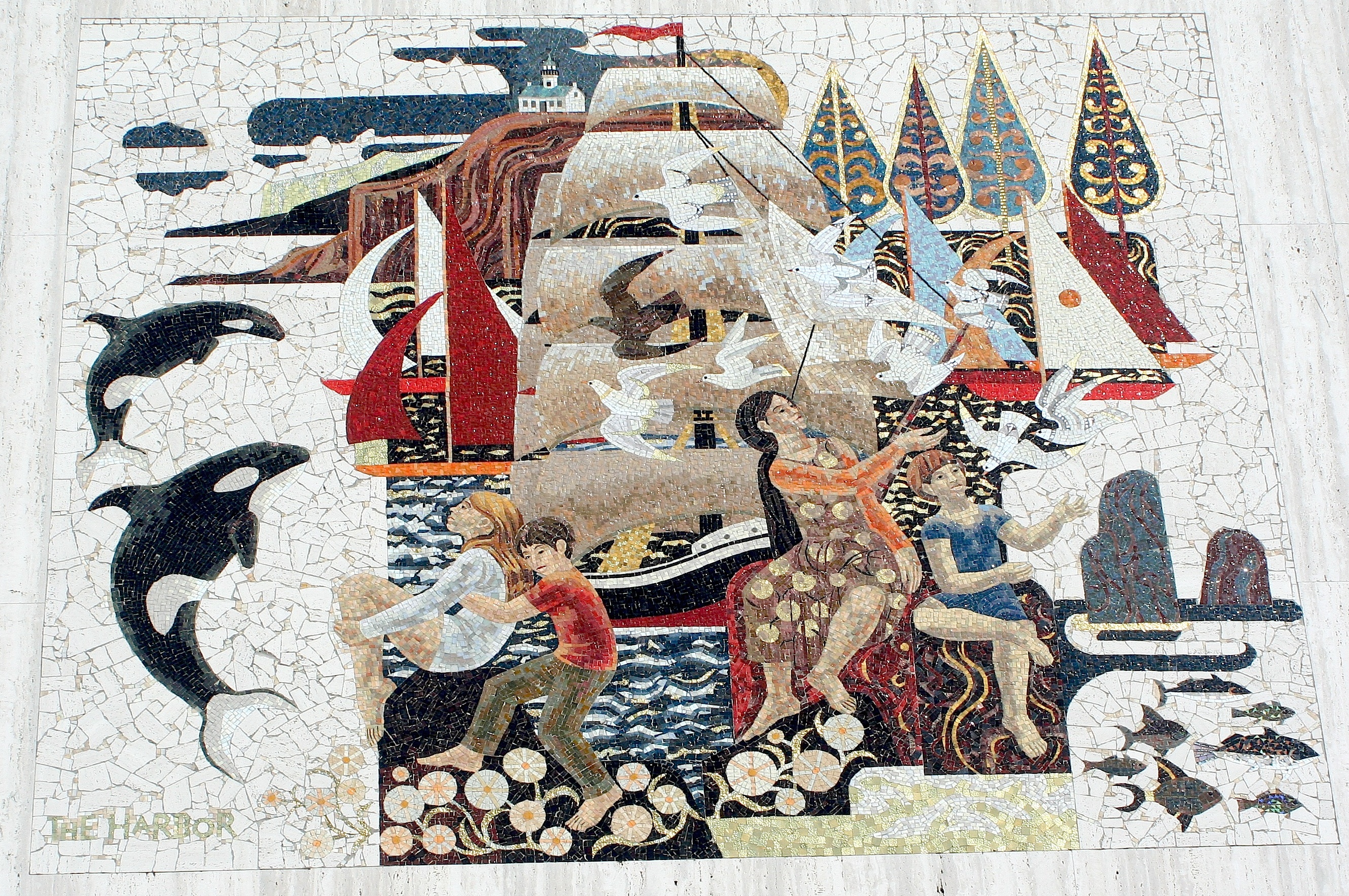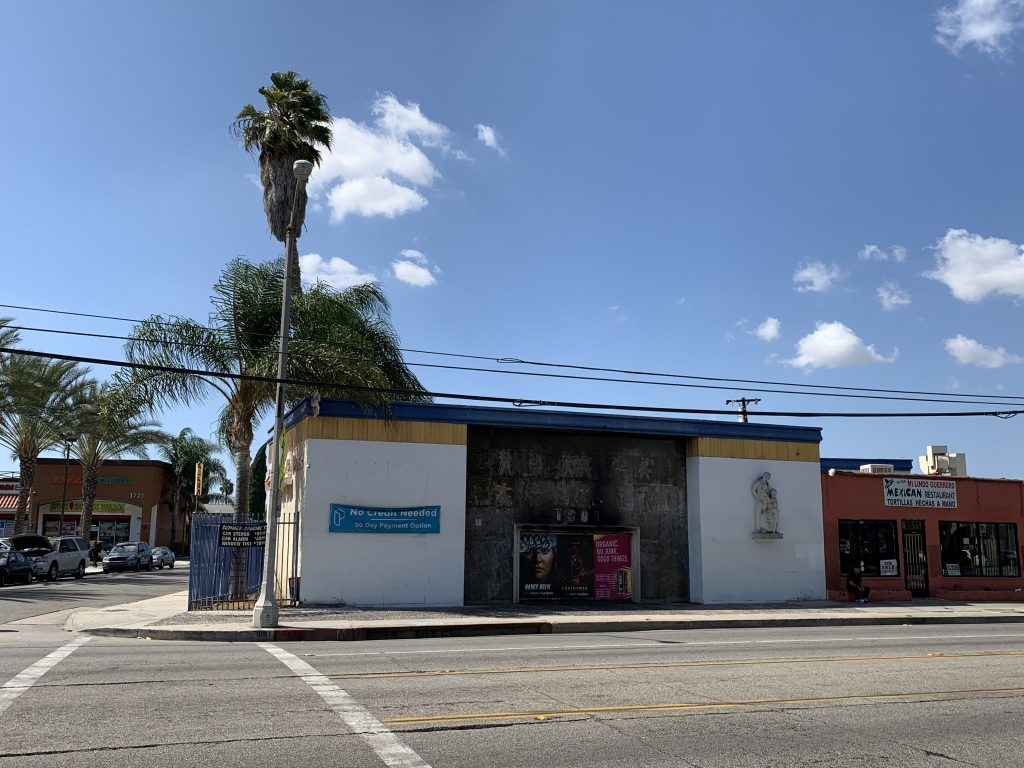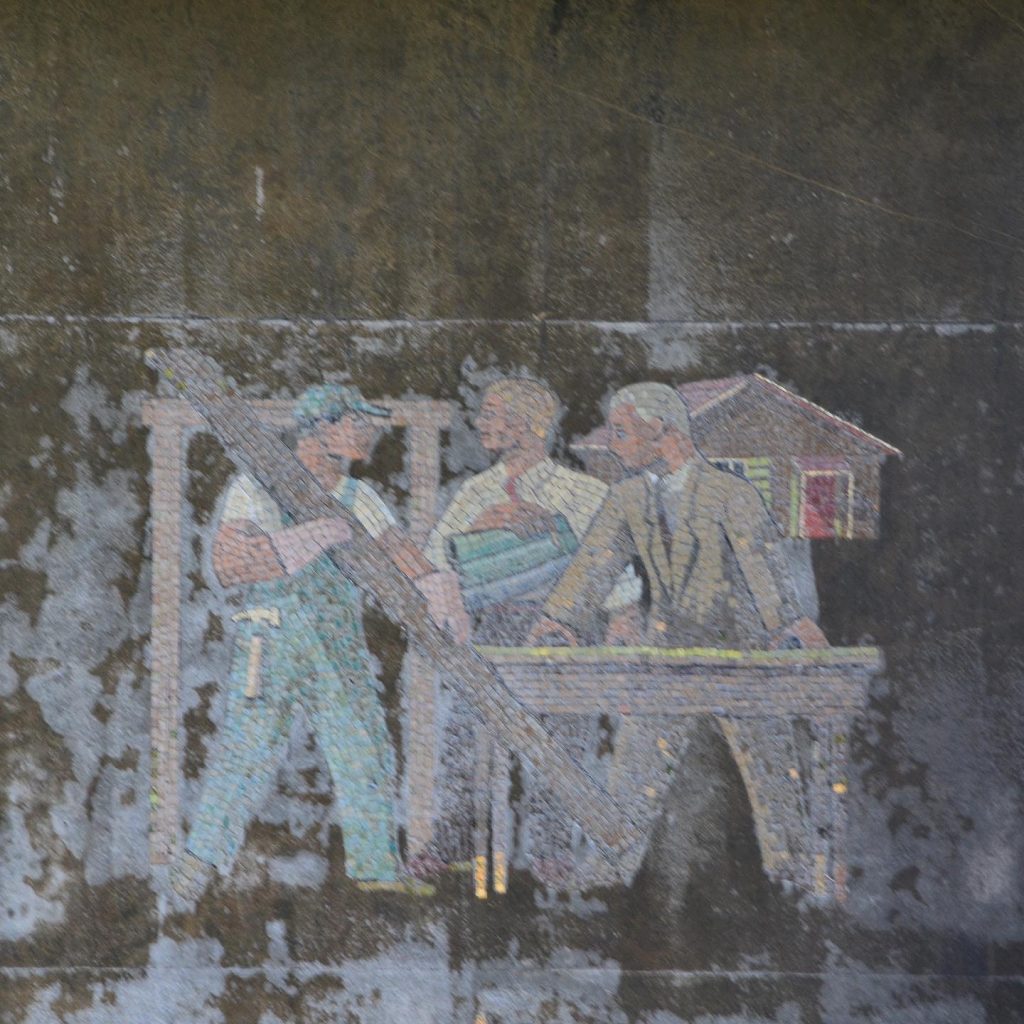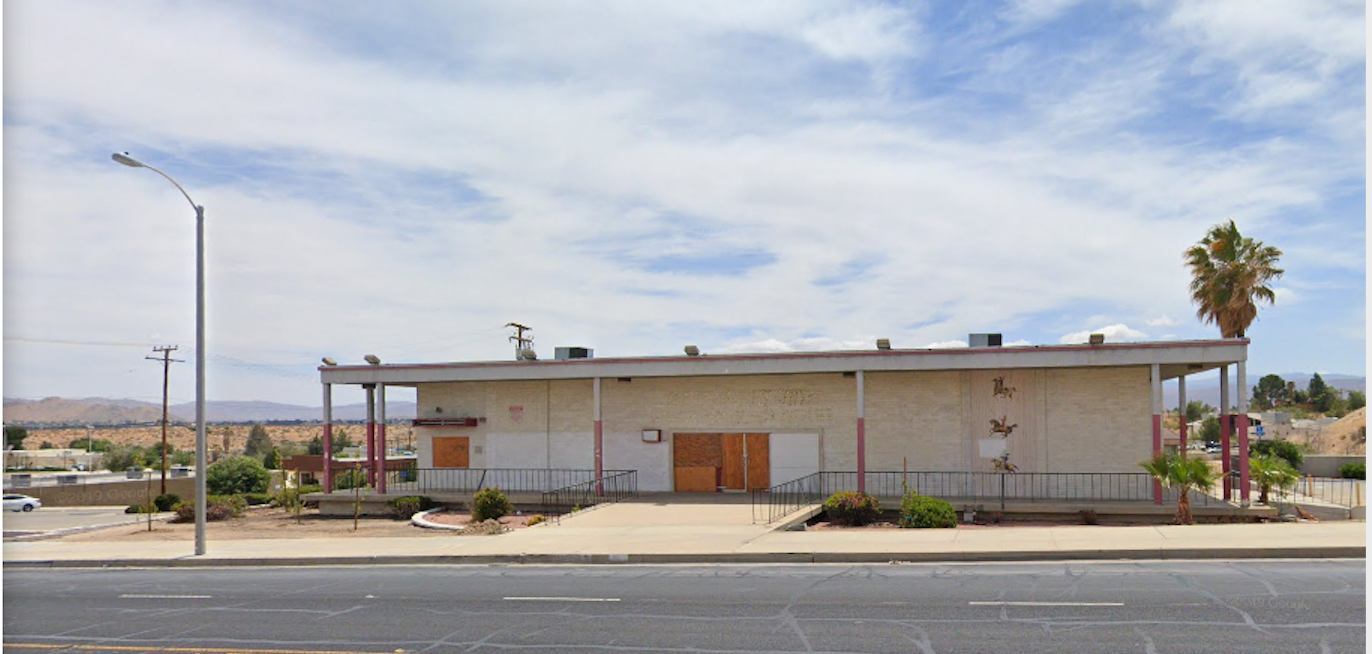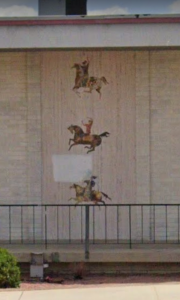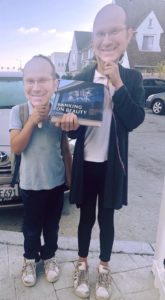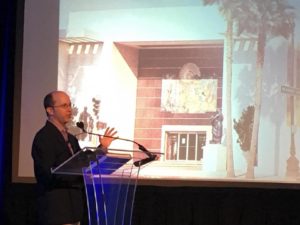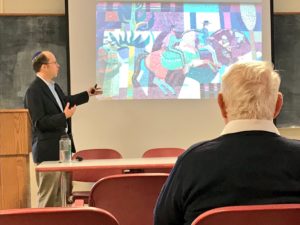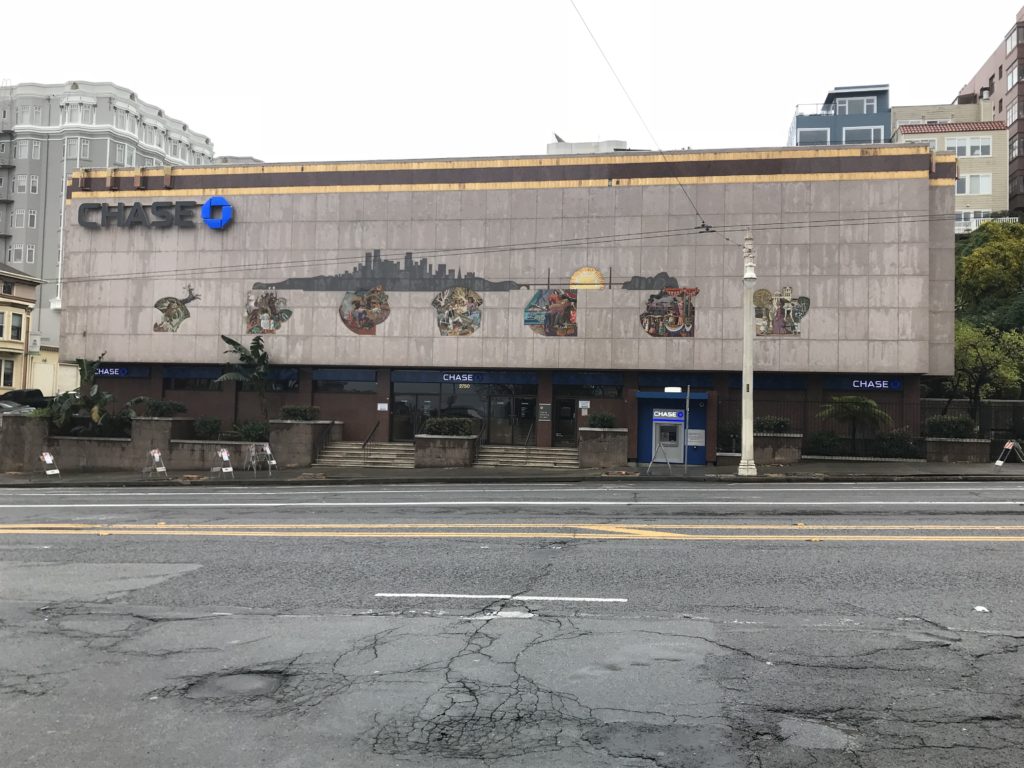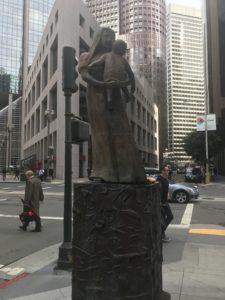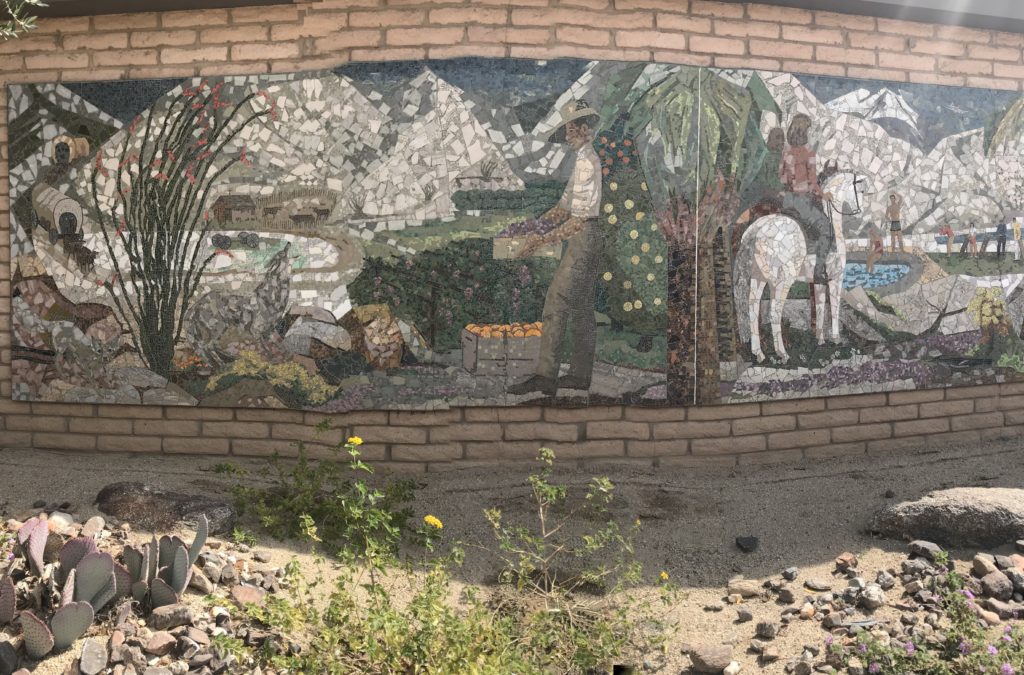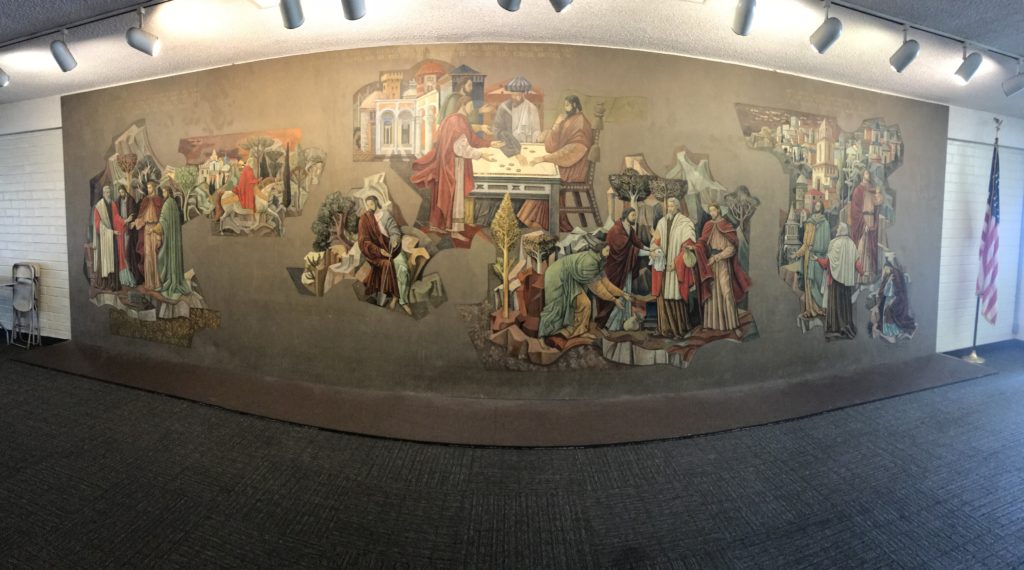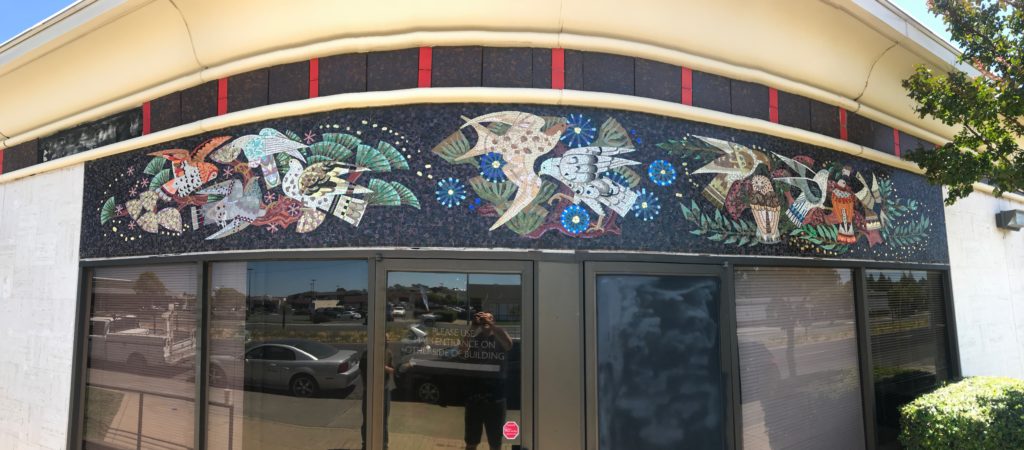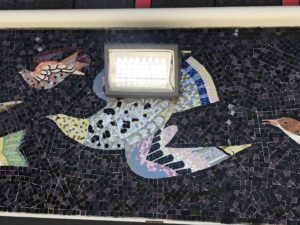
Bank of America, former Home Savings branch in Berwyn, Illinois. Image from Google StreetView; see below for details.
Hello again!
As we reach the end of 2014, I wanted to give you an update about all that is happening behind the scenes–as well as to share some thoughts about those Home Savings branches constructed outside California, and the effort to add them to the story.
It has been a productive fall! With support from Howard Ahmanson Jr. and the Ahmanson Foundation, I have been on leave, writing my book on the art, architecture, and urban context of the Sheets Studio work for Home Savings. Four of the planned seven chapters are drafted: The Story, Origins, Location, and Reception. That leaves Process, Meaning, and Legacies as the chapters to draft this spring. I am also speaking with presses about a full-color, heavily illustrated book, as well as museums about a possible exhibition. And, on Monday, I was interviewed by Paul Bockhurst for his documentary projects about Millard Sheets and other Claremont artists, and I toured Claremont Heritage.
Both the Location and Legacies chapter have sent me back into the records to track down dates and addresses–and so this week I published a full revision of the Definitive List, with more locations, and more accurate construction dates. There are two maps: one mapping all of the 168 former Home Savings locations, and the other with all the 159 other Sheets Studio public art sites. I welcome more information about their current status as well.
The question of current ownership–and whether those owners realize what they have–has finally driven my new post off the to-do list and now to your screens.

Vacant former Home Savings location at Bannister Mall, Kansas City. Image from Google StreetView; see below for details.
From 1947, when Howard Ahmanson purchased it, Home Savings had regular periods of growth, through acquiring other savings-and-loans, petitioning the state to expand their territory, and final due to changed regulations that allowed expansion throughout California, in around 1976, and then across the nation, in the mid-1980s. Though Millard Sheets had completed retired from the studio in 1980, Sue Hertel and Denis O’Connor, who had worked with Sheets on these commissions for decades, continued to produce similar work. Around 1990, Home Savings also commissioned some other artists, such as Marlo Bartels, Astrid Preston, and Richard Haas, to produce branch artwork, with a similar focus on community identity and history. These locations were constructed in Florida, Illinois, Missouri, New York, Ohio, and Texas.
In 1998, Home Savings was sold to Washington Mutual, and then in 2007-8, Washington Mutual was seized by the government and rapidly given to JP Morgan Chase. At both moments, some of the locations that the Sheets Studio had designed and decorated for Home Savings ceased to be banks. In 1998, some of those properties were sold to Met Life and managed by CB Richard Ellis, such as former branches in Santa Monica, Coronado, Montebello, and the Home Savings headquarters in Irwindale, along with some locations that are still banks, such as Santa Barbara and Riverside, presumably based on the value of their locations. Since Washington Mutual acquired a number of financial institutions before its collapse, other branches in an area where multiple banks were acquired, such as La Mesa and Redondo Beach, were sold off to other commercial-real-estate holders at other times. (I don’t have a master list of Washington Mutual locations from 2007; if you do, perhaps in a booklet form, I would love to see it!)
Chase was interested in taking Washington Mutual from the federal government in part because of its network of locations on the West Coast, where Chase had not had a presence; according to my list, Chase currently owns at least 69 locations with Sheets Studio artwork, mostly former Home Savings locations.

Wells Fargo, a former Home Savings branch in St. Petersburg, FL. Image from Google StreetView; see below for details.
But what gets really interesting is what happened to the 52 Home Savings locations with Sheets Studio artwork outside of California. Home Savings had for decades used their art and architecture as part of how to stand out against their traditional competitors in the West, including Wells Fargo and Bank of America, both based in San Francisco at the time. While both had some tradition of historic artifacts or mosaic banks, these seemed pale imitations to the number and uniformity of the Home Savings locations.
Yet, outside of California, I have found that, over and over again, it is Wells Fargo and Bank of America that are using the former Home Savings buildings–either purchased outright, or by acquiring banks that had acquired the location, such as Wachovia in Florida. Whether these locations were sold off by Washington Mutual in 1998 or Chase in 2008, I am not sure, but it seems that the California banks understood the power of this art and architecture, and they wanted to be first in line to pick up the former competitors’ locations in other states. I have found 12 locations owned by Bank of America, mostly in Illinois; 12 by Wells Fargo, mostly in Florida; and a few by US Bank in California, and then local credit unions and banks and trust companies elsewhere.
Thus, in a way, even when these banks are isolated–only five in all of Ohio, six each in Texas and Missouri, fifteen in Illinois, nineteen in Florida, just one in New York–they actually are still part of a conversation with Home Savings, carried on by its once-rivals that survive as well as by Chase, the steward of the largest number of these buildings.
Below I post the full details for these outside-California Home Savings branches with Sheets Studio art and architecture, to aid those in these communities in seeing their value and working to preserve them.
If an address brings you to this post, please contact me so I can connect you to the wider history of these buildings and their artwork.
| Home Savings |
3090 (3050) Aventura Blvd |
Aventura |
FL |
1990 |
Safra National Bank |
GoogleStreetView |
tile mosaic; O’Connor plan “beach scene (maybe Santa Monica)” |
Richard Haas; O’Connor |
| Home Savings |
9035 Boca Fontana Blvd 33434 |
Boca Raton |
FL |
1986 |
Fifth Third Bank |
GoogleStreetView |
mosaic: fish and snorklers |
Denis, Sue, Alba, Jill, Darin |
O’Connor |
| Home Savings |
7380 Manatee Ave west |
Bradenton |
FL |
1990 |
Wells Fargo |
GoogleStreetView |
tile mosaic: city map, sword, compass rose |
Richard Haas |
| Home Savings |
25749 U S Highway 19 |
Clearwater |
FL |
1985? |
Perenich and Coldwell Banker; covered? |
GoogleStreetView |
painted mural: segulls in flight |
O’Connor |
| Home Savings |
3325 W Hillsboro Blvd |
Deerfield |
FL |
1986 |
TD Bank; shows no art? |
GoogleStreetView |
galleon and deers? |
Denis, NOVA Designs? |
O’Connor |
| Home Savings |
1483 Main Street |
Dunedin |
FL |
1989 |
Wells Fargo |
GoogleStreetView |
egret and pelican over water; city shield? |
Marlo Bartels; Denis, Sue |
O’Connor; and http://www.marlobartels.blogspot.com/ |
| Home Savings |
4875 N Federal Hwy |
Fort Lauderdale |
FL |
1986 |
Wells Fargo |
GoogleStreetView |
tower |
| Home Savings |
12370 S Cleveland Ave |
Fort Myers |
FL |
1986 |
Wells Fargo |
GoogleStreetView |
mosaic: text tell history from muddy road to palms; Macgregor Blvd and mention Edison, Hendry, Terry, McGregor, Miles |
Denis, Sue, Homolka-Gilkerson |
O’Connor |
| Home Savings |
1701 East Young Circle |
Hollywood |
FL |
1988 |
demolished? |
GoogleStreetView |
“egrets” |
Denis, Sue |
O’Connor – CF Arlington Heights |
| Home Savings |
9899 NE 2nd Ave |
Miami Shores |
FL |
1986 |
Wells Fargo |
GoogleStreetView |
pelicans, boats |
Denis, Sue, Alba, Jill, Darin, Martita |
O’Connor |
| Home Savings |
900 Neapolitan Way |
Naples |
FL |
1987 |
put on hold |
| Home Savings |
12440 Pines Blvd 33027 |
Pembroke Pines |
FL |
1988 |
Wells Fargo |
GoogleStreetView |
Marlo Bartels |
http://www.marlobartels.blogspot.com/ |
| Home Savings |
702 N University Dr |
Pembroke Pines |
FL |
1985? |
Wells Fargo |
GoogleStreetView |
cows in enamel tile mosaic |
Fox Tile? |
http://www.foxtile.com/projects.html |
| Home Savings |
3340 N Tamiami Trail |
Port Charlotte |
FL |
1985 |
Charlotte Heart & Vascular Institute |
GoogleStreetView |
mosaic: Caloosa Indians, cattle, eagles, Seminole Indians, wildlife, shels, ranching, galleons, egrets, black woman, pelicans, fishing, phosphates, palm trees |
Denis, Sue, Alba, Annie, Pete Knersel? |
O’Connor |
| Home Savings |
2891 South Tamiami Trail, US Highway 41 Bougainvillea |
Sarasota |
FL |
1987 |
Wells Fargo |
GoogleStreetView |
circus animals, including monkeys, elephants, camels |
Denis, Franco -Nova Designs, Frank Homolka Jess Gilkerson; Studio MosaicArt Colledani Milan/NOVA Designs |
O’Connor |
| Home Savings |
1901 Alton Road 33139 |
So. Miami Beach (Alton Rd.) |
FL |
1987 |
Wells Fargo |
GoogleStreetView |
mosaic – fish |
Denis |
O’Connor |
| Home Savings |
4100 4th Street North |
St. Petersburg |
FL |
1987 |
Wells Fargo |
GoogleStreetView |
2 mosaic: dolphins and fish; just dolphins |
Denis |
O’Connor |
| Home Savings |
2050 U. S. Highway #1 / 8th avenue |
Vero Beach |
FL |
1990 |
tile mosaic |
Richard Haas |
| Home Savings |
6000 Okeechobee Blvd, Drexel Plaza |
W. Palm Beach |
FL |
1986 |
CDA Financial Plaza |
GoogleStreetView |
mosaic: polo players |
Denis, Franco; Studio MosaicArt Colledani Milan/NOVA Designs |
O’Connor |
| Home Savings |
415 E. Rand Rd |
Arlington Heights |
IL |
1989 |
Bank of America |
GoogleStreetView |
mosaic: “racetrack – horses & jockeys” |
Denis, Sue; Italian |
O’Connor |
| Home Savings |
6400 W Cermak Rd (at Ridgeland) 60402 |
Berwyn |
IL |
1991 |
Bank of America |
GoogleStreetView |
mosaic: theater showing The Ragman with Jackie Coogan; streetscape |
Denis, Sue, Gina Lawson, Leland Means, |
O’Connor |
| Home Savings |
6115 S Pulaski Rd |
Chicago |
IL |
1989 |
Bank of America |
Google StreetView |
mosaic – snow scene, ice skating |
Denis, Sue |
O’Connor |
are these interior? Not there? |
| Home Savings |
1300 Oakton Ave, 60018 |
Des Plaines |
IL |
1988 |
demolished? |
mosaic: “street w/ people in front (brass band)” |
Denis, Sue, Franco |
O’Connor |
| Home Savings |
1000 S York Rd |
Elmhurst |
IL |
1990 |
Bank of America |
Google StreetView |
interior mural |
“another artist” |
| Home Savings |
1336 Chicago Ave 60201 |
Evanston |
IL |
1991 |
Bank of America |
Google StreetView |
mosaic – men putting boat into lake; their wagon |
Denis, Sue, Gina, Kathy, Leland Means, Studio Marble |
O’Connor |
| Home Savings |
2108 W Jefferson St |
Joliet |
IL |
1988 |
Joliet Bank & Trust |
Google StreetView |
mosaic – birds; Roger Nelson inside painting of fields |
Denis, Sue, Roger Nelson |
O’Connor |
| Home Savings |
8745 N Waukegan Rd |
Morton Grove |
IL |
1988 |
Bank of America |
Google StreetView |
Denis, Sue, Frank Homolka, Franco |
O’Connor |
are these interior? Not there? |
| Home Savings |
1080 S Elmhurst Rd |
Mt. Prospect |
IL |
1989 |
Bank of America |
Google StreetView |
mosaic of columns |
Denis, Sue, “others” |
O’Connor |
| Home Savings |
1301 E Odgen Rd 60540 |
Naperville |
IL |
1990 |
Bank of America |
Google StreetView |
mosaic: fire company, wagon, bicycles; painted mural; is it mosaic: “volunteer fire dep”? |
Denis, Sue, Studio Marble |
O’Connor |
| Home Savings |
4200 W 95th St |
Oaklawn |
IL |
1989 |
Bank of America |
Google StreetView |
mosaic – RR< family scene, animals, church |
Denis, Franco |
O’Connor |
| Home Savings |
15826 S Lagrange Rd |
Orland Park |
IL |
1988 |
Bank of America |
Google StreetView |
mosaic: pointy trees; children as well? |
Denis, Sarah, Alba, Katy, Frank Homolka |
O’Connor |
| Home Savings |
501 N Greenwood Ave |
Park Ridge |
IL |
1986 |
Bank of America |
Google StreetView |
mosaic: wagon and children |
O’Connor |
| Home Savings |
5033 Dempster St |
Skokie |
IL |
1986 |
PNC Bank |
Google StreetView |
Henry Harmes, children, Market Day, Blameuser’s saloon, baseball team, hardware store, Amelia Louise Klehan doctor |
Denis, Sue, Jill, Alba |
O’Connor |
| Home Savings |
6300 S Kingery Hwy Suite 500 |
Willowbrook |
IL |
1987 |
mall; unclear |
Google StreetView |
mosaic – birds, squirrels, and owl that looks too happy? |
Denis, Melvin Wood, Franco Merli, NOVA Designs |
O’Connor |
| Home Savings |
1700 Clarkson Rd |
Chesterfield |
MO |
1991 |
First National Bank |
Google StreetView |
mural: “German immigrant farmers” field of corn |
Leland Means |
O’Connor |
| Home Savings |
201 N. Florissant Rd |
Ferguson |
MO |
1987 |
US Bank |
Google StreetView |
mosaic: figures from Indian to conquistador to train conductor in front of train |
Denis, Sue; Nova Designs |
O’Connor |
| Home Savings |
5720 E Bannister Rd |
Kansas City |
MO |
1986 |
vacant |
Google StreetView |
sculptures |
Denis; Betty Davenport Ford? |
O’Connor |
| Home Savings |
321 W Battlefield St |
Springfield |
MO |
1986 |
Hawthorn Bank |
Google StreetView |
mosaic |
Denis, Sue, Studio MosaicArt Colledani Milan/NOVA Designs /studio shots — from CA or Italy?// |
O’Connor |
| Home Savings |
3921 Hampton Ave |
St Louis |
MO |
1980s |
Lindell Bank |
Google StreetView |
Ford? Sculpture |
| Home Savings |
3727 Frederick |
St. Joseph |
MO |
1988 |
Citizens Bank and Trust |
Google StreetView |
painted mural: Pony Express |
Denis, Sue, Rebecca Guzak |
O’Connor |
| Home Savings |
108-36 Queens Boulevard (at 71 Rd) |
Forest Hills |
NY |
1989 |
Commerce Bank |
Google StreetView |
tile mosaic of New York horizon, trains; DOC painted mural : bluebirds? |
Richard Haas; Denis discussed |
CF in O’Connor Papers |
| Home Savings |
3174 Tremont Rd |
Columbus |
OH |
Jul-84 |
removed and preserved |
ceramic tile mosaic: cityscape and state symbols |
Marlo Bartels |
http://www.marlobartels.blogspot.com/ |
| Home Savings |
95 E. William St |
Delaware |
OH |
1989 |
First Merit |
Google StreetView |
“Little Brown Jug harness race” |
Denis, Sue, Franco/NOVA |
O’Connor |
| Home Savings |
6280 Sawmill Rd |
Dublin |
OH |
1989 |
Diamond Cellar; art removed |
Google StreetView |
mosaic: Wyandotte Indian, homesteader, dam, child on horse in cornfield, Victorian lady, University Hall |
Denis, Sue; NOVA Designs |
O’Connor |
| Home Savings |
150 S State St |
Marion |
OH |
1987 |
Huntington |
Google StreetView |
mosaic birds sitting on vines frieze over the doorway |
Denis, Sue |
O’Connor |
| Home Savings |
1055 W Fifth St |
Marysville |
OH |
1988 |
The Bank |
Google StreetView |
abstract tiles? Plan of mosaic of townscape |
Denis, Richard Ewen |
O’Connor |
| Home Savings |
10721 Preston Rd |
Dallas |
TX |
1989 |
Chase? Vacant? |
Google StreetView |
map of Texas, rodeo, Exxon Mobil pegasus, more |
Denis, Sue, Studio Marble |
O’Connor |
| Home Savings |
12802 Memorial Drive |
Houston |
TX |
1986 |
Chase |
Google StreetView |
Thundering Horses on the Open Range |
Denis, Sue, NOVA Designs |
O’Connor |
| Home Savings |
14550 Memorial Drive |
Houston |
TX |
1986 |
Chase |
Google StreetView |
painted mural: church, farm scene, tractor, trees |
Denis, Jude Freeman, Kathryn Yelsa |
| Home Savings |
4081 F.M. 1960 West 77068 |
Houston |
TX |
1987 |
Chase |
Google StreetView |
“rodeo” |
Denis, Sue, Frank Homolka; Studio MosaicArt Colledani Milan/NOVA Designs |
O’Connor |
| Home Savings |
10011 FM 1960 Bypass Road West |
Humble |
TX |
1986 |
painted mural: oil derrrick, cowboys, longhorns, train |
Denis, Sue, Kathryn Yelsa |
O’Connor |
| Home Savings |
2201 N.W. Military Hwy |
San Antonio |
TX |
1987 |
International Bank of Commerce |
Google StreetView |
mosaic: family group and livestock; H. Lee Hale: “use scenes of early Texas Pioneer cultures (German, English, Irish) overlaid on a background of wild flowers as the subject” – DOC – “No Alamo – Mexicans, etc.” |
Denis, NOVA Designs |
O’Connor |
